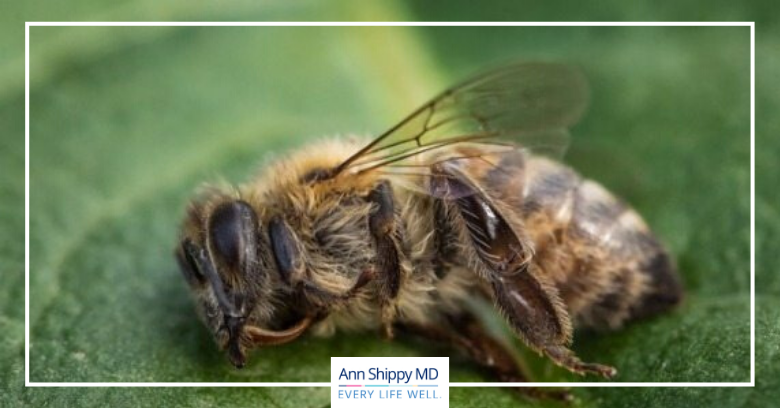Bees make us honey. They help pollinate our plants. They even help teach kids about sex ed. They do so much good for our environment. Yet, they are on the brink of extinction.
Bees are one of the many pollinators disappearing. As they vanish the world’s food supply will be affected. The United Nation’s Intergovernmental Science-Policy Platform on Biodiversity and Ecosystem Services (IPBES) released a warning statement in October addressing the issue:
There are more than 20,000 species of wild bees alone, plus many species of butterflies, flies, moths, wasps, beetles, birds, bats and other animals that contribute to pollination. Pollinated crops include those that provide fruit, vegetables, seeds, nuts and oils. Many of these are important dietary sources of vitamins and minerals, without which the risks of malnutrition might be expected to increase. Several crops also represent an important source of income in developing countries from, for example, the production of coffee and cocoa. 75% of the world crops are dependent at least in part on pollination.
Threats to the food supply could also mean threats to our national security as nations depleted of food compete for resources.
Bees are disappearing because of human-made factors, namely the use of insecticides. Mother Jones reports that a class of insecticides called neonicotinoids is widely used in commercial agriculture and has had a lethal effect on bees. Pesticides and climate change are also to blame, along with invasive parasites and a general decline in the quality of bees’ diets.
Hawaii’s population of the seven species of yellow-faced bees has been shrinking massively. NPR reports that:
The seven endangered species are impacted by a wide variety of threats, including habitat destruction because of urbanization or nonnative animals, the introduction of nonnative plant species, wildfires, nonnative predators and natural events such as hurricanes, tsunamis and drought.
Here is a read on the history of Hawaii’s native yellow-faced bees.
The good news is that the U.S. Fish and Wildlife Service has given endangered status to seven species of yellow-faced bees native to Hawaii. These are the first bees to be protected under the Endangered Species Act. According to the Xerxes Society for Invertebrate Conservation, “these bees are often found in small patches of habitat hemmed in by agricultural land or developments. Unfortunately, the USFWS has not designated any “critical habitat,” areas of land of particular importance for the endangered bees.” The government’s categorization allows them to implement recovery programs, gain important funding, and counteract the effects of outside sources.
For conserving our environment and food supply, we need to do more to conserve our bees. According to the University of California at Davis, beekeepers in the US have declined steadily since World War II. But there’s still fun and profit to be (bee!) made. If you’re considering beekeeping start here.
These pollinators are necessary, not only for nature, but for our means of survival as a species.
SOURCES:
http://www.ipbes.net/article/press-release-pollinators-vital-our-food-supply-under-threat
http://www.motherjones.com/environment/2015/07/climate-change-killing-bumblebees
http://www.ctahr.hawaii.edu/uhmg/news/V9-Magnacca-NativeBee.pdf
http://sfp.ucdavis.edu/pubs/SFNews/archives/94032/













